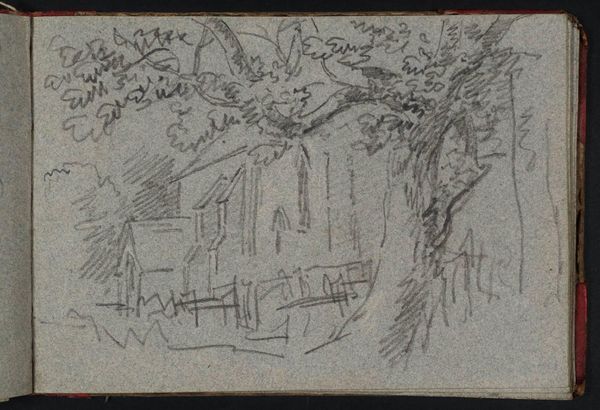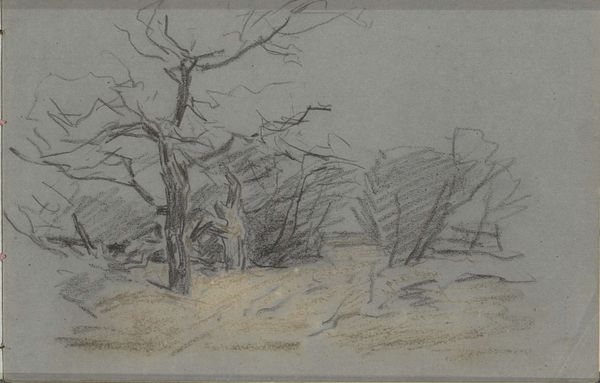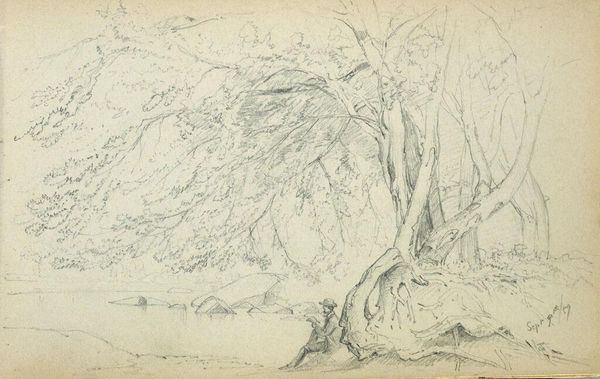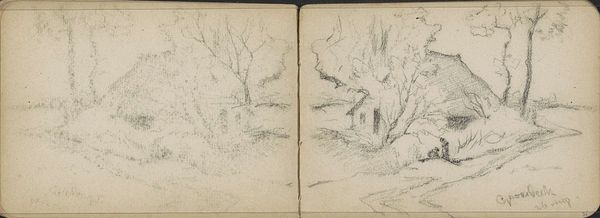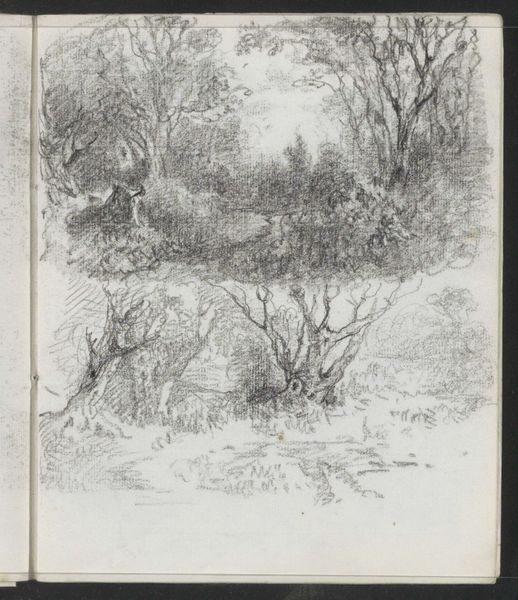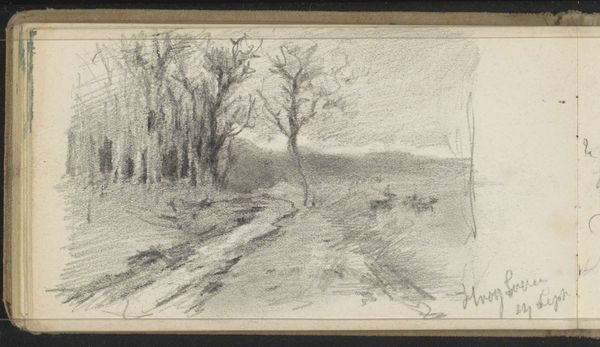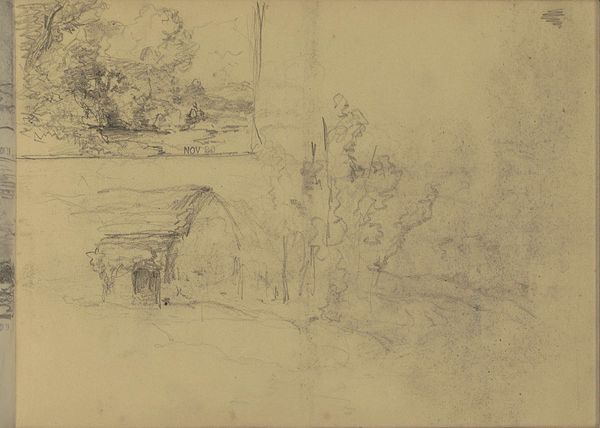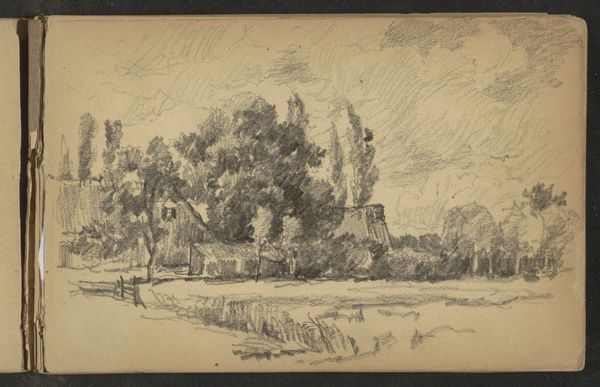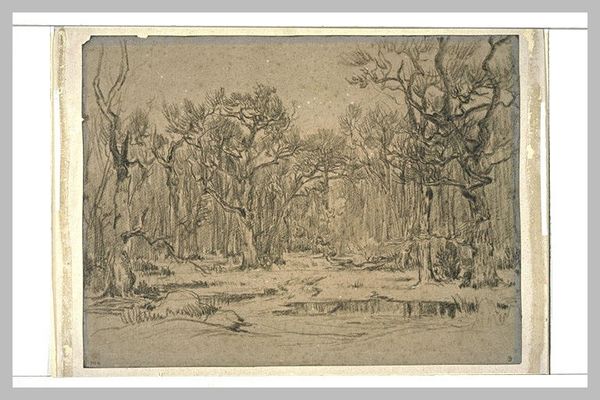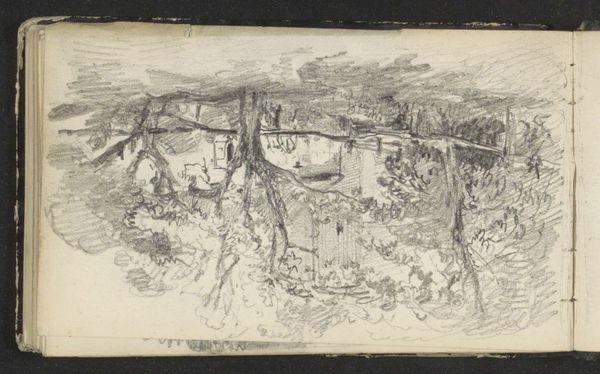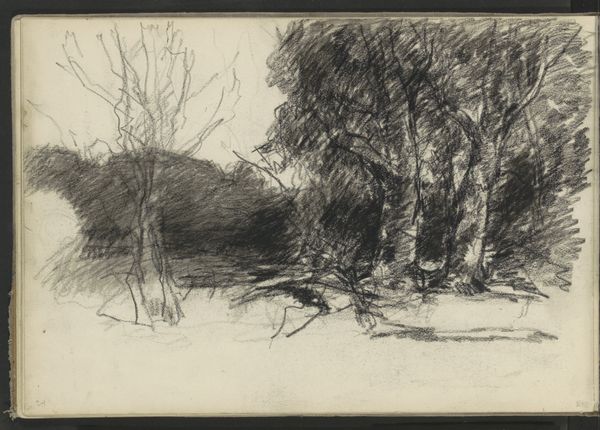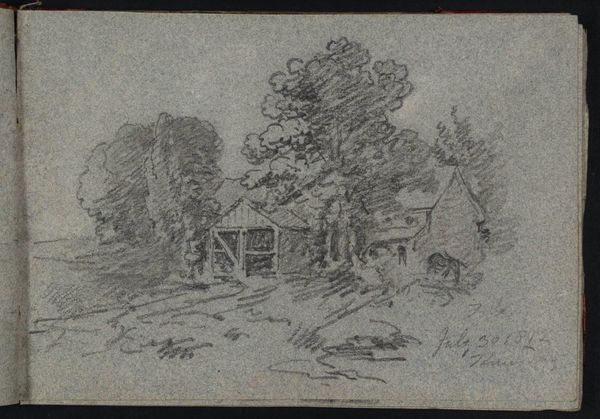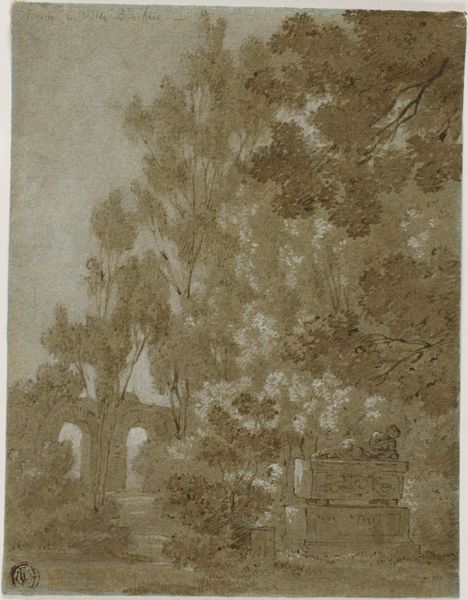![[title not known] by Sir George Howland Beaumont](/_next/image?url=https%3A%2F%2Fd2w8kbdekdi1gv.cloudfront.net%2FeyJidWNrZXQiOiAiYXJ0ZXJhLWltYWdlcy1idWNrZXQiLCAia2V5IjogImFydHdvcmtzL2IxN2E4ZmZiLWJmYmUtNDg5OS04MGZjLWNkNmQ5YTFmOWY3OS9iMTdhOGZmYi1iZmJlLTQ4OTktODBmYy1jZDZkOWExZjlmNzlfZnVsbC5qcGciLCAiZWRpdHMiOiB7InJlc2l6ZSI6IHsid2lkdGgiOiAxOTIwLCAiaGVpZ2h0IjogMTkyMCwgImZpdCI6ICJpbnNpZGUifX19&w=3840&q=75)
Dimensions: support: 125 x 181 mm
Copyright: CC-BY-NC-ND 4.0 DEED, Photo: Tate
Curator: This sketch, by Sir George Howland Beaumont, appears in one of his notebooks held at the Tate. Beaumont, born in 1753, was a prominent figure in the art world, known for his influence on landscape painting. Editor: There's a subdued, almost melancholy mood here. The muted tones emphasize the contrast between the classical architecture and the wildness of the overgrowth. Curator: Beaumont's landscapes often reflect his deep engagement with the Picturesque movement, which sought to find beauty in the irregularities and asymmetries of nature, often contrasting the natural with constructed ruins. This is visible in his representation of nature as being intertwined with humanity. Editor: The strategic use of charcoal lends a textural depth, almost a romantic decay. Notice how the columns and pediment of the building anchor the composition while the dynamic lines of the branches seem to almost envelop it. Curator: Beaumont was deeply invested in notions of taste and aesthetic improvement, actively participating in debates about the National Gallery. His own landscapes offered a vision of idealized Englishness, often intertwined with imperial narratives. Editor: Reflecting on this, it’s the interplay between structure and organic form that captivates me. Curator: It leaves me pondering Beaumont's role in shaping perceptions of landscape and national identity.
